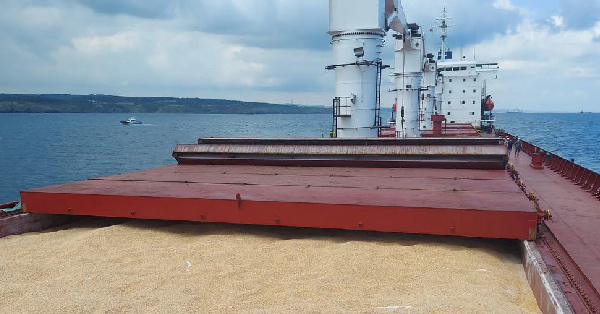A total of 32.9 million tonnes of agricultural products were exported by Ukraine under the deal till July 16. The discontinuation of trade flow through this passage, or at least the temporary suspension of vessel movement in the region due to uncertainty will lead to a decline in shipping demand, particularly for the Supramax and Panamax vessels.
The safe passage through the Black Sea not being available, Ukraine is likely to depend on alternative routes – through Romania’s Constanta port and inland routes – for its exports. While the deal helped Ukraine export 16.8 million tonnes of wheat in the previous marketing year, approximately 39% of total wheat exported moved outside of the grain corridor, through Eastern Europe, particularly Romania. In 2022, Romania re-established rail links with Ukraine and neighbouring Moldova for transporting cargo. The construction of critical railway sections in Moldova which began in 2022, will increase the capacity and speed for Ukrainian products to reach the port of Constanta. In addition, they will also facilitate traffic heading to a group of smaller ports along the Danube river, the main inland waterway route in Europe. The accumulated capacity of these smaller ports can partly ease exports from Ukraine and serve as an important transit centre.
Despite the possibility of these alternative routes providing some relief to Ukraine’s exports, the overall impact could further hurt the dry bulk shipping:
There could be severe congestion at the port of Constanta, which has a storage capacity of two million tonnes; Romania is a major wheat exporter and is about to enter its export season. If Romania prioritises its domestic crop export, then Ukraine’s exports could be delayed.
Even if Ukraine continues to export partly through these alternative routes, the rise in logistic costs will inevitably make trade uncompetitive; smaller vessels will be required for transporting grain to Europe through inland river routes.
Therefore, a shift in global trade patterns will continue. Ukraine’s exports to Asia have dropped sharply, while the share to Europe has risen, compared to the pre-war levels. China has consistently imported higher volumes of wheat from Australia, replacing Ukraine, losing tonne-mile demand. We believe this shift is unlikely to be temporary as Ukraine’s partners will seek to ensure food security, considering there are inevitable long-term effects of the war on the harvest capacity of Ukraine.
Even though major exporters such as Canada, Brazil and Australia have been increasing their grain exports this season, we expect grain trade to decline in 2023 after having contracted in 2022, as the gap left by Ukraine’s export reduction is unlikely to be filled. The grain market will be adversely affected, posing challenges for the Supramax and Panamax segments, with Russia remaining disconnected from the global payment network SWIFT, Argentina continuing to struggle with severe drought and the US grain exports remaining down YoY.
Source: Drewry AIS, Drewry Maritime Research, Black Sea Initiative Joint Coordination Centre









































